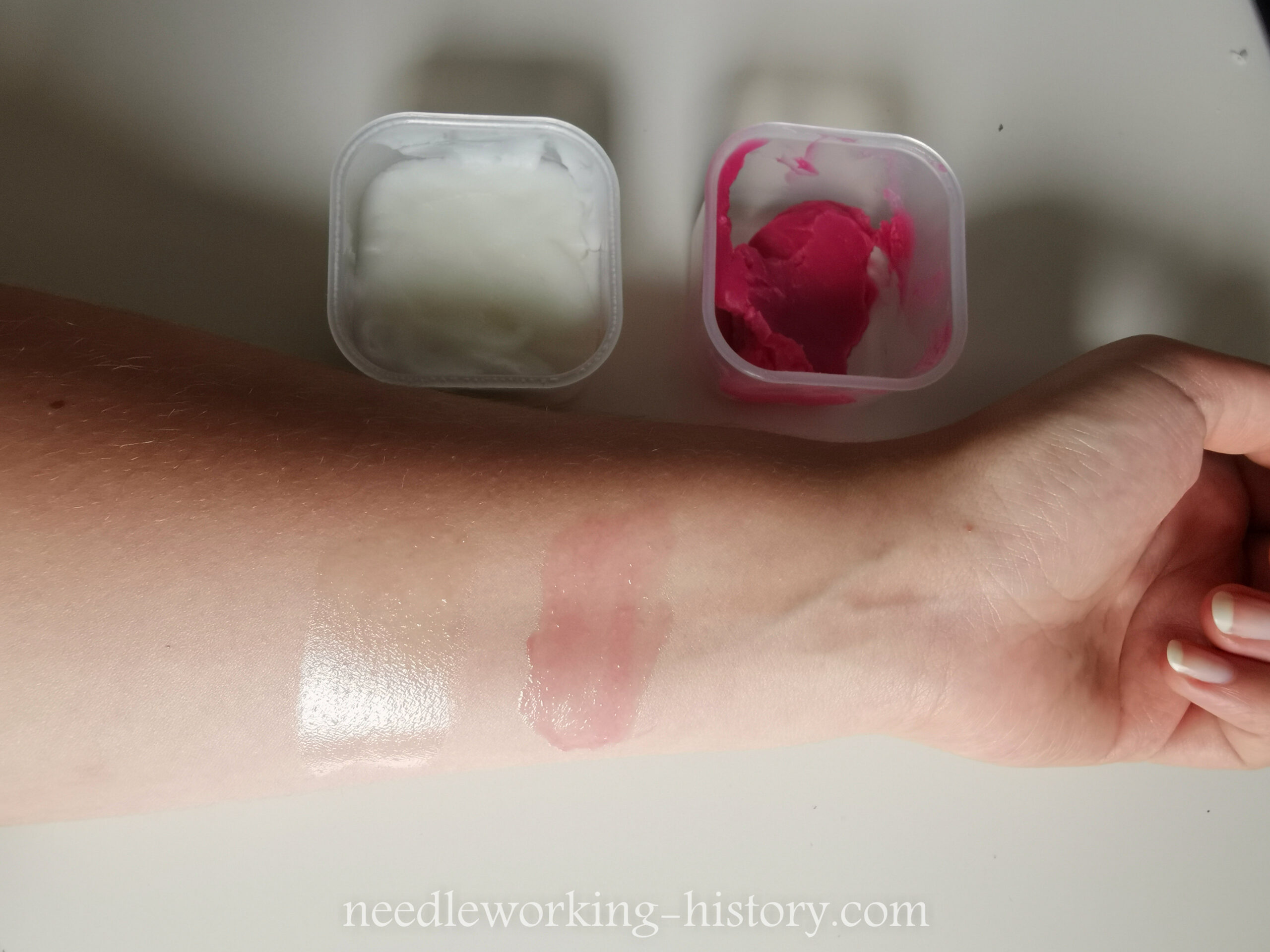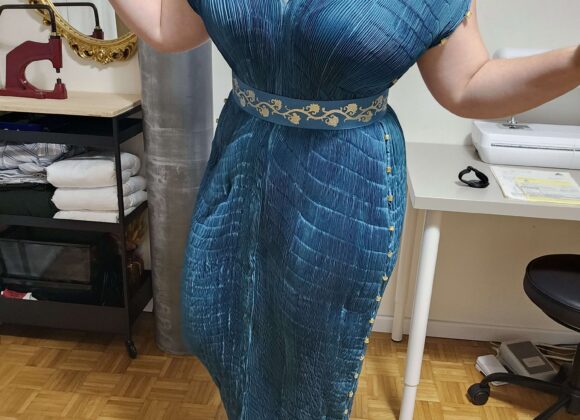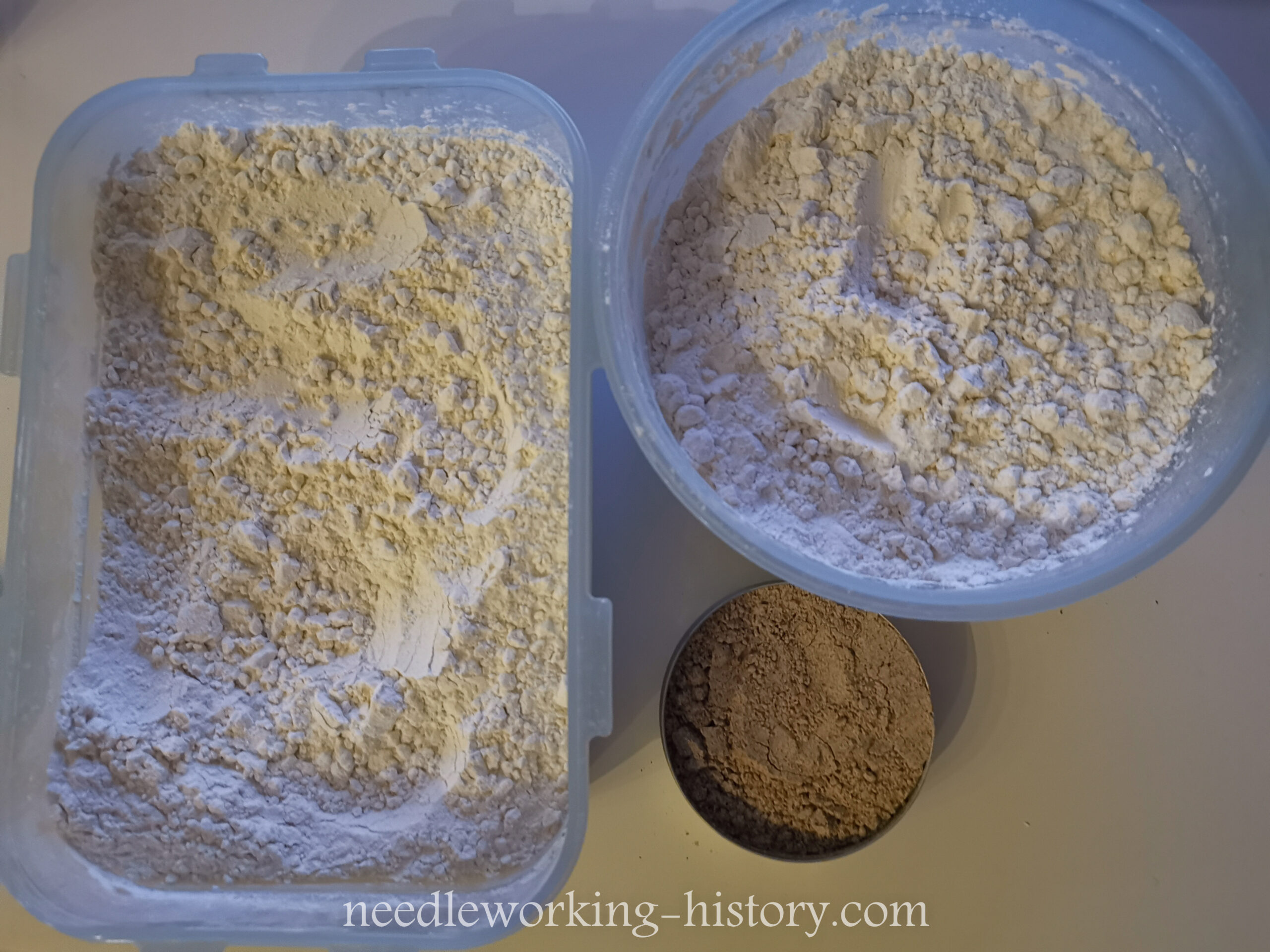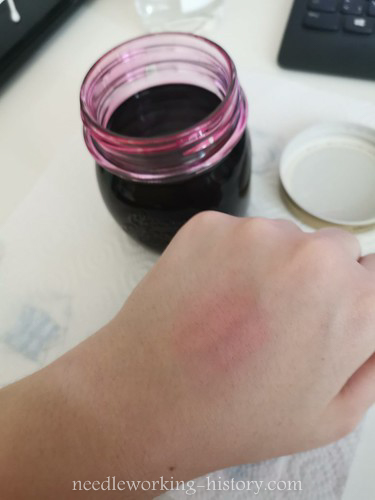Last year I came to a point where I was super disappointed in my hairstyle-skills with modern products. I have very long hair which does not hold a curl at all and is also very slippery. I can do my 18th and 19th century make up with modern products without thinking twice but I still wanted to know what they used, how they used it and what I would look like with authentic make up.
This was the starting point of my research in 18th and 19th century beauty recipes!
My main source for all the books I have looked into is archive.org! I like it a lot more than Google books because I find it easier to search inside the books which I hve to do quite often because a lot of them lack a table of contents.
Since I never made any kind of make up or hair product before I wanted to start with something easy where it’s easy for me to source the ingredients.
Cold cream was in almost every book I looked into. Cold cream is a fat based cream where a lot of water is mixed into the fat without an extra emulsifier because fats can absorb up to 30% water! The water in those creams is also what makes the cream ‚cold‘.
It’s good for dry and rough skin and is suitable for sensitive skin too. In the 20th century it was also used as a make up remover!
We still use cold creams in our modern day to day life. You all probably know the Nivea cream in the blue tin: This is a cold cream! A very modern one with quite complex ingredients but it’s still a cold cream.
I also heard a lot about the Ponds cream – also a cold cream.
Now let’s talk about the juicy bits: My try with cold cream 😀
I used a recipe from The family manual and servants‘ guide : …ses of servants from 1850, page 102.
Cold cream
The article sold under this name is composed of white wax, almond-oil, and rose water in the following proportions: – Take of almond oil 4 ounces, white wax 1 ounce. To be gently melted, and well blended with 4 ounces of fresh rose-water, by stirring in a warm marble mortar.
The rose water should be added very gradually.
I made a smaller batch because I don’t know the shelf life of the product and didn’t want anything to go rancid because I made to much to actually use.
I used:
- 15g White wax (As far as I know bleached bees wax. I bought mine from a drugist)
- 60g Sweet almond oil
- 60g Rose water (I bought mine in france in a supermarket. Since it’s food safe and I use the very same as my toner everyday I was confident using it in this recipe)
I don’t have pictures from me actually making the cold cream because my hands were oily and I wanted to work without interruptions. But I have instructions of how I made it.
- First I melted the wax with the oil in a heat safe bowl over a pan with boiling water (if you have a double boiler use it!)
When I saw that the wax was melting I turned of the heat and mixed everything until the wax was liquid. I didn’t want the fats to get too hot. - In the next step I poured the liquid fat/wax into a warm mortar (if it’s ovensafe heat it up a little bit or let it stand in hot water for a few minutes. Please be careful when you touch it!) and started adding a teaspoon rosewater at a time. Everything seemed to work out fine.
- My step 3 is not in the actual recipe. At the end of adding the rose water I noticed, that the fats did not absorb any water anymore. It looked like the more I mixed it the more water came out of the fat.
I don’t know how much it was exactly but I don’t think that the whole 60 g of rose water ‚came out‘ of the cream.
I also tasted the water and it did not smell or have a rosy taste anymore. I think the essential oils in the water are in the cream now.
The cream smells a little bit like roses and is super moisturizing. I love it for my ellbows which tend to dry out very fast. I also used it when I had dry patches and after a day the skin started to be very soft again.

Since I liked the result of the cream so much I also tried adding powdered carmine to turn in into a ‚cream rouge‘.
The results were…not so great. The carmine was easy to blend into the cream but the cream does not colour your lips or cheeks at all. It’s pretty to look at in a container, but that’s pretty much it.

Since my try with an easy rouge recipe failed, I sourced a new recipe I wanted to try out – Liquid rouge!
The results were amazing but I’m going to tell you more about it in the next post about 19th century beauty recipes!





